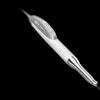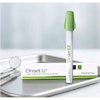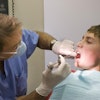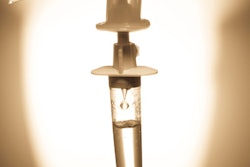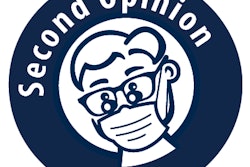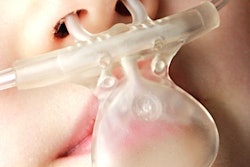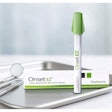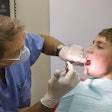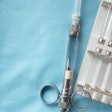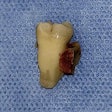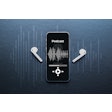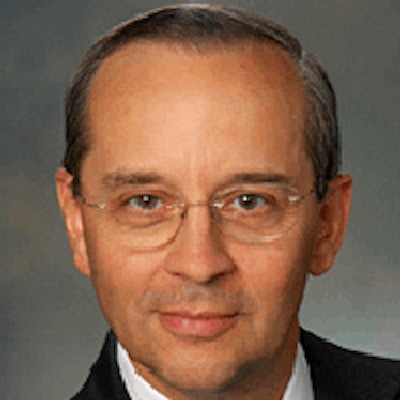
New training simulation equipment, new technology, revised sedation guidelines, and a focus on evidence and prevention rather than blame are among the ways dentists, dental organizations, and dental boards could work to decrease the likelihood that a patient might die while under sedation, according to ADA spokesperson Joel Weaver, DDS, PhD.
 Joel Weaver, DDS, PhD.
Joel Weaver, DDS, PhD.Dr. Weaver noted that for all the improvements in technology, sometimes a situation comes down to a dentist having to rescue a patient from a deeper level of sedation than was intended.
"We have monitors that better monitor a patient's airway and hopefully give the dentist a longer period of time to fix the problem," he said in an interview with DrBicuspid.com. "But it still comes down to, is the dentist capable of rescuing the patient from these deeper levels of sedation if a problem occurs?"
Dr. Weaver is an emeritus professor of anesthesiology in the College of Dentistry and a professor of clinical anesthesiology in the College of Medicine and Public Health at Ohio State University in Columbus.
New guidelines
Although accidents and unfortunate outcomes are uncommon in relation to sedation, when they do occur, it is often in regard to sedated patients becoming unconscious, Dr. Weaver noted.
"If the dentist gives more medication than what the patient requires to maintain moderate sedation, they may slip into a deeper level of sedation," he said. "Typically, there may be a problem with the airway."
The airway issue may be excessive soft tissue blocking the upper part of the airway, a large tongue relative to the child's size, or even large tonsils.
"Now that fewer children are having their tonsils removed routinely, we have more children at risk for these airway problems if their tonsils are enlarged," Dr. Weaver said.
The new American Academy of Pediatrics/American Academy of Pediatric Dentistry (AAP/AAPD) guidelines issued in June 2016 encourage dentists to examine a pediatric patient's tonsils to determine if they are enlarged, he added.
However, obesity is another risk factor causing airway problems, Dr. Weaver noted.
"As the patient population gets larger and larger in terms of physical size, there is an increased risk for obese adults and children to have excessive soft tissue, which can lead to airway obstruction," he said.
A third issue is oversedation to the point that the patient loses their drive to breathe, according to Dr. Weaver.
"The dentist has to recognize that the patient is not breathing and has to be able to rescue the airway and ventilate the patient," he said. "Finally, when the patient is in a deeper level of sedation or light general anesthesia, sometimes [the patient] will develop a laryngospasm where the vocal cords will close off. This interferes with ventilation and is a problem the dentist has to be able to fix."
The ADA is in the process of revising its sedation guidelines, Dr. Weaver noted, with new guidelines possibly being presented at the upcoming ADA annual meeting in Denver in October.
Simulation training
“It's one thing to know what to do and another thing to do it under pressure.”
One of the newer technologies Dr. Weaver is excited about is the high-fidelity human simulation manikin that allows a practitioner to experience these sedation emergencies in real-time, like an airline pilot does in a flight simulator.
"It's one thing to know what to do and another thing to do it under pressure," he said. "So we don't create real emergencies, but a simulation is the next best thing, I think.
This technology is not in wide use yet, but he expects that, like advanced cardiac life support training, it will grow in use as dentists seek to enhance their skills.
Information needed
Beyond new technology and training, however, Dr. Weaver advocates investigation and data to find out why sedation accidents occur.
"To make it safer, we need to find out if there is a safety problem in regard to sedation," he said. "We have to find out what might be the root cause of the sedation disasters. It goes beyond trying to find out if the dentist is at fault or not."
As he noted, if an airplane crashes, the investigators do not stop when they find out the pilot made an error; the investigation continues to find out why this occurred and how it can be fixed.
"Right now, dental boards want to look at whether a practitioner did something wrong, but what we don't know is why did this accident happen and how can we fix the problem," Dr. Weaver said.
One issue blocking this kind of an investigation is that state dental boards often do not share the information from their investigations.
"If we don't know where the problems are and where they originate, we're never going to be able to fix the root cause," he said. "If the root cause is the fact that its being taught wrong, if the root cause is there is not enough education, or if it is something else, we could study that and improve safety."
Dr. Weaver encourages state dental boards to recognize that they can contribute to the solving of a problem and saving lives.
"I don't perceive that we are looking for what dentist did this at what office," he said. "Give us the basic fundamentals of the case so they could be studied."
He suggested that state dental boards could provide redacted information that can be categorized and studied, which would perhaps lead to changes in sedation training and practice to make sedation even safer.
